John Schmid:
The Hunt for an Improved Melrose, pt. 1
I'm pleased to present another contribution from John Schmid, a veteran of many years in the apple program at Ohio State, in an era when public fruit breeding programs were more plentiful and better funded. It's a bit longish, and he's kindly divided it in half, so I'm going to post part one now, and part two later this week, I think:
I had just started work at the OARDC when a project was launched to find or develop an improved ‘Melrose’ apple. About 25 years later, I was given the honor of presenting the results of this project at the Horticulture Field Day in Wooster.
In the late 70’s, the Ohio government had just proclaimed ‘Melrose’ the state apple. The researchers and apple growers in Ohio knew that unlike several popular cultivars, ‘Melrose’ was a high quality apple and well adapted to Ohio, They decided that every effort should be made to ensure that ‘Melrose’ would become popular. As I stated in my earlier post, appearance is the weakness of ‘Melrose’, so the project was to find or create a better-colored ‘Melrose’.
Years earlier, red sports of ‘Delicious’ started to show up in Washington commercial orchards in great numbers. It was suspected, but to my knowledge never proven, that the scion wood used to propagate those trees was somehow exposed to radiation. So in 1977, the Ohio team set out to duplicate this accident with ‘Melrose’.
Large amounts of scion wood was collected and sent to the Ohio State University Hospital in Columbus where the wood was exposed to radiation. Calls to radiation experts found that no one had a guide for how much radiation was necessary, so the scion wood was divided into three lots and exposed at a best guess rate and rates to either side of it.
One thousand rootstocks were purchased and a crew of grafters was recruited (technicians and grad students who couldn’t find an excuse). During the grafting, it was noted that the scion wood seemed to be dry.
That spring, very few grafts “took” after being planted out in the nursery. More calls to more radiation experts suggested that we were off by a factor of 10. Instead of “shaking up the genes” in an effort to find a beneficial mutation, we had fried the graft tissue.
In the nursery, the few grafts that took were flagged and the graft-less rootstocks were maintained to one shoot for the rest of the year. That fall, bud wood was collected and exposed to lower rates of radiation than before. Surviving rootstocks were double budded where possible to ensure the most viable trees for testing. Each bud could be THE ONE.
After a year’s growth in the nursery, the new trees were dug and planted out at OARDC’s branch in Jackson, Ohio. Where there were two buds growing, both were allowed to remain. In all, there were just over two hundred trees under study. Manpower always being at a premium at branch stations, the trees were sprayed, but not pruned beyond what was necessary to get tractors through the aisles.
As the first fruit appeared in this special orchard, it became evident that we’d indeed “shaken up the genes”. A couple of trees had only a few apples, but those it had were 100% russetted. Another had fruit that was not only 100% ressetted, but also had knobs or lobes like a potato! Much conversation was generated after we exhibited these samples. A contest of sorts ensued to name these “sports”. Many names were suggested, but since Dr. Ferree was heading the effort, the one that I liked best was ‘Ferree’s Seek Much Further’. We were undaunted by the levity, if the genes could be shaken to produce such a monstrosity, surly they had been shaken to produce a better ‘Melrose’ as well.
The 'Melrose' apple was developed by Ohio State, and much effort has been made to encourage its adoption, with mixed results. It is, however, an unarguably better apple than much of what is bought today. I wonder if the lack of good red color would have been as much of an issue today, when there are "red" fruited cultivars like 'Fuji', which not only is consistently poorly colored, but which often has a sort of a greenish-brown cast which to me suggests a poorly ripened fruit. (That said, a good 'Fuji' is a wonderful apple...color really has very little bearing on eating quality).
Oh, and for those who don't recognize get it, 'Ferree's Seek Much Further' is a play on 'Westfield Seek No Further', a very nice antique dessert apple with one of the cooler fruit names out there. (There's an apple named 'Slacken Your Belt' or something to that effect that I read about a while ago, and I haven't had any luck tracking any information down about it. That's got to be right up there for the all-time best name. If any one knows anything about it, drop me a line).
Anyway, more to come on 'Melrose' and the perils of mutation breeding. Stay tuned!
Labels: apples, breeding, John Schmid, malus


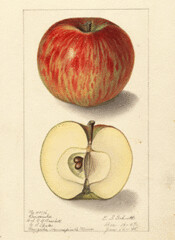
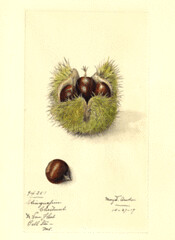
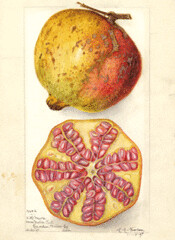
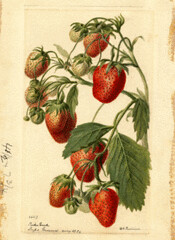
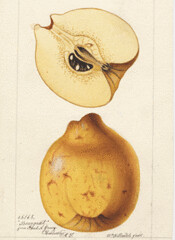



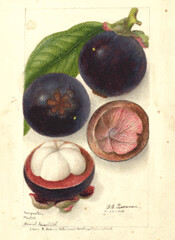
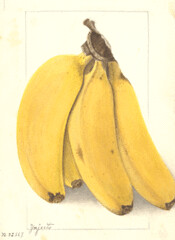

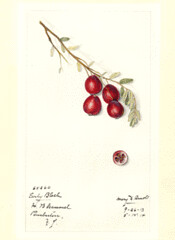
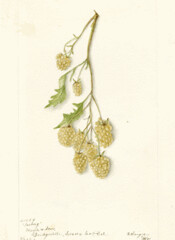
2 Comments:
I chuckle when I see someone talk about the Melrose apple.
I was born and raised in Wooster, Ohio, the home of this apple (it was developed at the OARCD in Wooster - Ohio Agricultural Research and Development Center) as well as a more obscure cultivar called Holiday. A good chunk of my childhood was spent a three minute walk from home at Melrose Elementary School. Oddly enough, the first 16 years of my life were lived right nextdoor to Melrose Orchard where the neighbor kids would try to steal Melrose apples before getting shot with salt pellets by the crazy woman running the orchard.
It wasn't until about 5 years ago when I was first bitten by the orchard bug that I actually fit all of the Melrose pieces together. As a 43 year old and orchard owner myself, I now see it from the perspective of the crazy old woman with the salt pellet gun. Fortunately, I've resorted to more humane methods of keeping out the unwanted.
It's funny how things come full circle.
Its a very useful post for the youngsters who are trying to start things up.
Post a Comment
<< Home